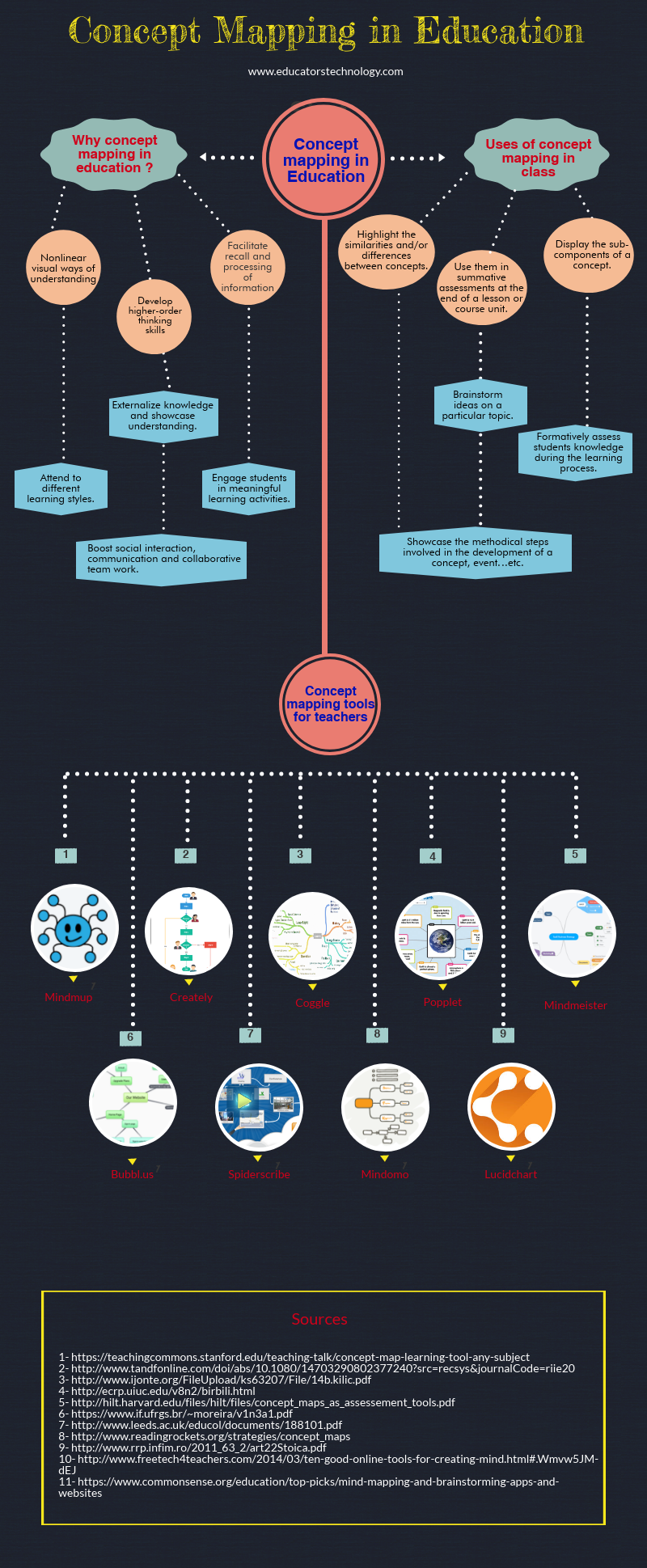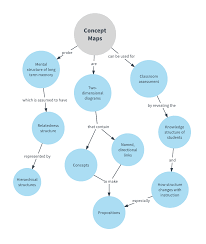e-Learning Ecologies MOOC’s Updates
Concept Mapping
https://www.educatorstechnology.com/2018/01/teachers-guide-to-use-of-concept-maps.html
Concept mapping is a teaching and learning visual aid that is “a way of representing relationships between ideas, images, or words… [and] are a way to develop logical thinking and study skills by revealing connections and helping students see how individual ideas form a larger whole.” (Concept Map, n.d.). Concept mapping can help students “improve their ability to understand and remember concepts because brains process visuals faster than plain text” (Lucidchart, 2018). According to EducatorsTechnology.com, it can provide learners with nonlinear visual ways of understanding, develops higher-order thinking skills, and facilitates recall and processing of information (EducatorsTechnology, 2018).
Concept mapping can be broken down into four basic steps- brainstorm, organize, map, and connect (ESC Region 13, 2017). In the brainstorming phase, the focus question about the main topic gives structure as main points and ideas are written down. From there, all ideas are organized into logical groupings from general down to specific details. A map can then be created starting with the main topic or focus at the top, then branching down to each main point, and then branching further into supporting details. Once the map is created, the relationship is written on each arrow showing how the two concepts connect. According to the U of G Library, good questions to ask are:
How do these ideas fit together?
Have you made all necessary connections?
Is the map accurate, logical, and detailed?
Can I describe the connections between these ideas?
(U of G Library, 2017).
https://www.lucidchart.com/blog/how-to-make-a-concept-map
Mapping software is readily found online from free basic versions to upgraded paid versions. Students can choose from Bubbl.us, Popplet, MindMup, Creately, Coggle, Mindmeister, Lucidchart, Mindomo, and Spiderscribe (EducatorsTechnology, 2018) along with many other alternate commercial sources. The use of the concept map addresses the visual learning style and can incorporate audio learning if video or audio files are added, as well as the kinesthetic learning style by turning it into a note taking device or formative assessment (ESC Region 13, 2017).
Resources:
Concept Map. (n.d.). In Wikipedia. Retrieved March 15, 2020, from
https://en.wikipedia.org/wiki/Concept_map
Educators Technology and Mobile Learning. (2018, January 26). 9 Great Concept Mapping Tools for Teachers and Students [Blog post]. Retrieved from
https://www.educatorstechnology.com/2018/01/9-great-concept-mapping-tools-for.html
ESC Region 13. (2017, December 6). The Teacher Toolkit: Concept Map (High School) [Website]. Retrieved March 15, 2020 from http://www.theteachertoolkit.com/index.php/tool/Concept-Map
Lucidchart. (2018, May 31). How to Make a Concept Map [Video file]. Retrieved from https://www.youtube.com/watch?v=8XGQGhli0I0
U of G Library. (2017, April 27). How to Create a Concept Map [Video file]. Retrieved from https://www.youtube.com/watch?v=sZJj6DwCqSU





@Sarah McKinzie,
I love concept mapping and I use it extensively in my teaching. This is a valuable skill especially when most of our classroom based teaching is memory based. Our students are required to sit and memorise large quantities of information of information and concept mapping creates a visual summary that many students find valuable. It is also a skill that can assist school leavers when making the transition to tertiary education.
@Sarah McKinzie, thanks for your post. I love the idea of concept mapping with technology! I especially like the idea of integrating audio into the visual and creating a more immersive experience, and I imagine there are options for mapping using virtual reality, as well. I'm also curious about the difference between concept maps, mind maps, and logic maps and will have to look into it!